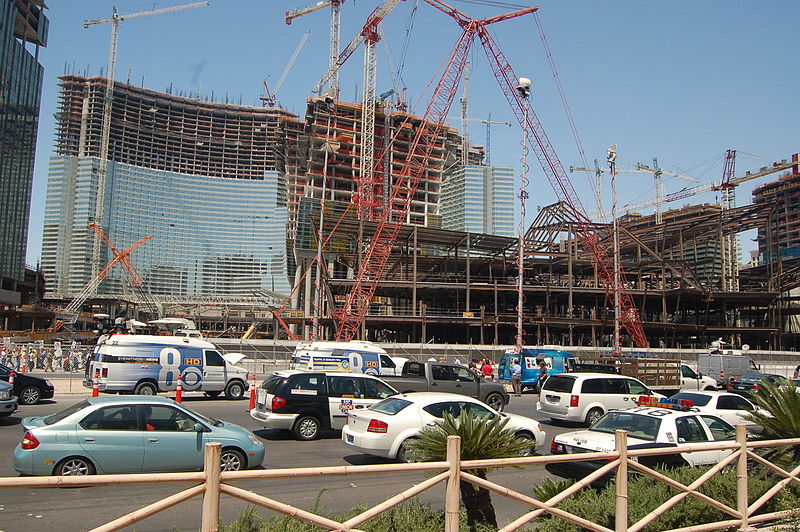The Design-Build Institute of America (DBIA), the only organization that defines, teaches and promotes best practices in design-build, has released new research findings indicating that for the first time more than half of projects above $10 million are being completed through design-build project delivery.
The newly released study confirms that the use of design-build has remained steady since its growth spurt at the end of the last decade, and also that Oregon and the Military sector are leading with the most dollars being spent on design-build projects.
“The growing use of design-build is not surprising,” says Lisa Washington, CAE, CEO/Executive Director of DBIA. “Throughout the last five years, and even through the recession, we’ve seen a large increase in demand for information and training on design-build best practices. Owners from all sectors have been turning to design-build delivery because they recognize the inherent value it brings to any project in any sector of any size.”
Shortly before the economic downturn a little over five years ago, the use of design-build spiked from 29% of the nonresidential market in 2005 to 36% in 2008. Throughout the recession period, design-build use continued to grow, and now with the economy stable and slowly recovering, the use of design-build has held steady at around 40% for the last three years.
RSMeans analyzed detailed data on nearly a million construction projects, state by state, and found that the West Coast is where design-build is the most prevalent. In fact, 70% of construction dollars being spent in Oregon are on design-build projects. California is the second highest at 59% and Washington the third highest state at 56%.
When looking at specific sectors, the military uses design-build on 81% of projects. However, even when military projects are taken out of the equation, Oregon is still the top state due to multifamily residential and industrial sectors’ preference for design-build. Those two industries also lift Michigan to the second place spot in the list of states doing the most non-military design-build.
“The Reed/RSMeans segmentation analysis now includes nine complete years of actual history, statistically supporting observation of trends at the state and industry sector segment levels,” says Tim Duggan, Director of Custom Solutions, Reed/RS Means, one of North America’s largest information providers to the design and construction industry.
RSMeans’ proprietary database of historical and planning construction projects data served as the basis for the study in addition to the incorporation of other publicly and privately available data sources. A copy of the full report, “Design-Build Project Delivery Market Share and Market Size Report,” is available on DBIA’s web site.
Related Stories
Market Data | Apr 1, 2024
Nonresidential construction spending dips 1.0% in February, reaches $1.179 trillion
National nonresidential construction spending declined 1.0% in February, according to an Associated Builders and Contractors analysis of data published today by the U.S. Census Bureau. On a seasonally adjusted annualized basis, nonresidential spending totaled $1.179 trillion.
Affordable Housing | Apr 1, 2024
Biden Administration considers ways to influence local housing regulations
The Biden Administration is considering how to spur more affordable housing construction with strategies to influence reform of local housing regulations.
Affordable Housing | Apr 1, 2024
Chicago voters nix ‘mansion tax’ to fund efforts to reduce homelessness
Chicago voters in March rejected a proposed “mansion tax” that would have funded efforts to reduce homelessness in the city.
Standards | Apr 1, 2024
New technical bulletin covers window opening control devices
A new technical bulletin clarifies the definition of a window opening control device (WOCD) to promote greater understanding of the role of WOCDs and provide an understanding of a WOCD’s function.
Adaptive Reuse | Mar 30, 2024
Hotel vs. office: Different challenges in commercial to residential conversions
In the midst of a national housing shortage, developers are examining the viability of commercial to residential conversions as a solution to both problems.
Sustainability | Mar 29, 2024
Demystifying carbon offsets vs direct reductions
Chris Forney, Principal, Brightworks Sustainability, and Rob Atkinson, Senior Project Manager, IA Interior Architects, share the misconceptions about carbon offsets and identify opportunities for realizing a carbon-neutral building portfolio.
Reconstruction & Renovation | Mar 28, 2024
Longwood Gardens reimagines its horticulture experience with 17-acre conservatory
Longwood Gardens announced this week that Longwood Reimagined: A New Garden Experience, the most ambitious revitalization in a century of America’s greatest center for horticultural display, will open to the public on November 22, 2024.
Office Buildings | Mar 27, 2024
A new Singapore office campus inaugurates the Jurong Innovation District, a business park located in a tropical rainforest
Surbana Jurong, an urban, infrastructure and managed services consulting firm, recently opened its new headquarters in Singapore. Surbana Jurong Campus inaugurates the Jurong Innovation District, a business park set in a tropical rainforest.
Cultural Facilities | Mar 27, 2024
Kansas City’s new Sobela Ocean Aquarium home to nearly 8,000 animals in 34 habitats
Kansas City’s new Sobela Ocean Aquarium is a world-class facility home to nearly 8,000 animals in 34 habitats ranging from small tanks to a giant 400,000-gallon shark tank.
Market Data | Mar 26, 2024
Architecture firm billings see modest easing in February
Architecture firm billings continued to decline in February, with an AIA/Deltek Architecture Billings Index (ABI) score of 49.5 for the month. However, February’s score marks the most modest easing in billings since July 2023 and suggests that the recent slowdown may be receding.

















